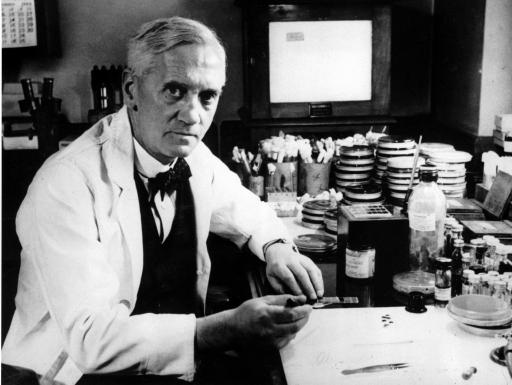Chimps Discover New Antibiotic!
Romans 8:20-21
“For the creature was made subject to vanity, not willingly, but by reason of him who hath subjected [the same] in hope, because the creature itself also shall be delivered from the bondage of corruption into the glorious liberty of the children of God.”
When penicillin was first used as an antibiotic, it was considered a wonder drug. Infections which had been fatal for thousands of years were all of a sudden curable.
Man has long known that some natural substances have a natural ability to fight infection. But modern medicine had to step aside and acknowledge that not all medical breakthroughs are made by doctors – or even human beings!
 For years it has been known that the roots and leaves of the Aspilia shrub are used as a traditional African treatment for wounds and stomachaches. Researchers also observed chimpanzees swallowing the leaves of the shrub. This led them to investigate more about the leaves. They learned that Aspilia leaves and roots contain a chemical which kills some infectious bacteria as well as fungi and worms. Researchers hope to learn whether this chemical is safe and effective for humans when taken orally.
For years it has been known that the roots and leaves of the Aspilia shrub are used as a traditional African treatment for wounds and stomachaches. Researchers also observed chimpanzees swallowing the leaves of the shrub. This led them to investigate more about the leaves. They learned that Aspilia leaves and roots contain a chemical which kills some infectious bacteria as well as fungi and worms. Researchers hope to learn whether this chemical is safe and effective for humans when taken orally.
However, the mystery remains. How did the chimps discover the antibiotic nature of Aspilia? We need to look to our Creator, Who appears to have given the chimps this knowledge. For while disease and death are not part of His original design for the creation, He was loving enough to provide medicinal help for these consequences of human sin. But the permanent cure for sin and death began with the birth of His Son, Jesus Christ.
Prayer:
Dear Father, disease and death were not Your plan for the creation, but were the result of man’s rebellion against You. Let the wide scope of Your mercy in providing us with some earthly remedies for the results of sin fill me with even greater appreciation for Your boundless mercy and love to us in Christ. In His Name. Amen.
Notes:
Photo: Alexander Fleming is credited with discovering penicillin in 1928.